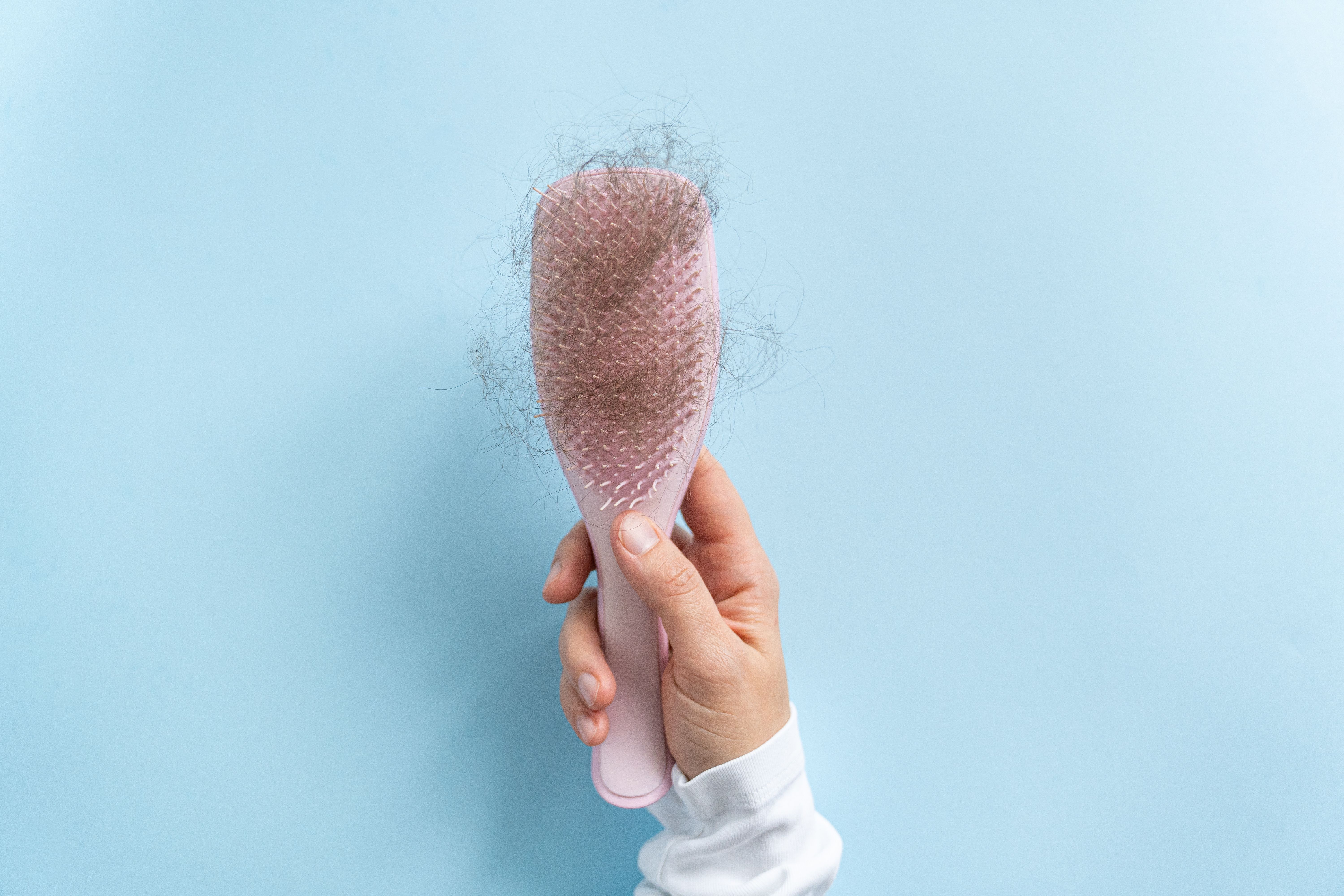Woman holding brush full of hair | Image Credit: anaumenko – stock.adobe.com
The exposure of the oral contraceptive pill (OCP) showed signs of a protective effect of the CYP1B1 missense variant in patients with frontal fibrosing alopecia (FFA) risk and was linked to an increased outcome of FFA in only participants with OCP history.
A gene environment interaction study applied a case control design to discover whether the OCP conveyed a protective effect of the common missense variant in CYP1B1, vital to hormone metabolism.1 Data were collected from female-born patients with FFA based in United Kingdom dermatology clinics between July 2015 and September 2017; data were analyzed from October 2022 through December 2023.
Patients with FFA, which is seen predominately in postmenopausal individuals, experience irreversible hair loss due to the formation of follicular lichen planus. Oftentimes, FFA starts off slowly before gradually increasing into a band of balding skin that runs along the front and sides of the hairline.2 Although it is possible to treat and potentially stop FFA from spreading, once the hair loss occurs, the hair follicles are scarred over and no longer able to regrow hair.
In a British Medical Journal article from 1973, dermatologists’ back then confirmed the increase of hair loss in women after stopping the pill.3 Since the normalization of OCP and its increased popularity throughout the end of the 20th century, researchers have continued to hypothesize it as a contributing factor to FFA incidence.1
There were 489 White British women enrolled in the study with 34,254 unrelated controls selected in a 1:66 ratio from UK Biobank. Participants were matched across age and genetic ancestry using the first 4 principal components obtained from the genotypes of 17,821 independent common variants across the genome.
Of the 489 patients with FFA, the average age of the population was 65.8 years and 75.7% had prior history of OCP use. In the age and ancestry matched control individuals (n = 34,254), the average age was 65 years and 91% had prior OCP use.
Results between the risk allele in CYP1B1 and FFA were observed in the present cohort (OR, 1.64; 95% CI, 1.35-1.99; P = 5.16 × 10−7). The cohort had evidence to support the association between female participants with a history of OCP use (OR, 1.9; 95% CI, 1.50-2.40; P = 8.41 × 10−8) and no link among individuals without a history of OCP use (OR, 1.16; 95% CI, 0.82-1.64; P = .39).
Study limitations include the different settings in which OCP use was established that could introduce recall and social desirability bias. The study also failed to collect data on the type of OCP used among individuals who had history of prior use. Certain environmental exposures were unaccounted for, including geographically and ethnically diverse cohorts, especially since the population was limited to White British women. Lastly, exposure to other exogenous hormonal therapies, like hormone replacement therapy and detailed history of life events, is relevant to the level of research.
Not all forms of OCP have been known to stimulate hair regrowth, but pills that have higher estrogen levels than progestin levels are more likely to keep hair follicles in the anagen phase longer, resulting in hair growth.4 Nonhormonal forms of OCP are often suggested for patients with a strong family history of hair loss. Some forms of low-androgen OCP include desogestrel-ethinyl estradiol, norethindrone, norethindrone-ethinyl estradiol, and norgestimate-ethinyl estradiol.
The study supports the findings that aberration in hormone levels and xenobiotic metabolism contribute to FFA pathogenesis, leading to hair loss. Results highlight the potential promise between risk allele in CYP1B1 and OCP use in patients with FFA.
References
1. Rayinda T, McSweeney SM, Christou E, et al. Gene-environment interaction between CYP1B1 and oral contraception on frontal fibrosing alopecia. JAMA Dermatol. Published online May 29, 2024. doi:10.1001/jamadermatol.2024.1315
2. Hair loss types: frontal fibrosing alopecia overview. American Academy of Dermatology Association. August 3, 2022. Accessed May 30, 2024. https://www.aad.org/public/diseases/hair-loss/types/frontal-fibrosing-alopecia
3. Hair loss and contraceptives. Br Med J. 1973;2(5865):499-500.
4. Watson S. Birth control and hair loss: Understanding the link, treatment & more. Healthline. February 1, 2016. Accessed May 30, 2024. https://www.healthline.com/health/birth-control/birth-control-and-hair-loss#takeaway

